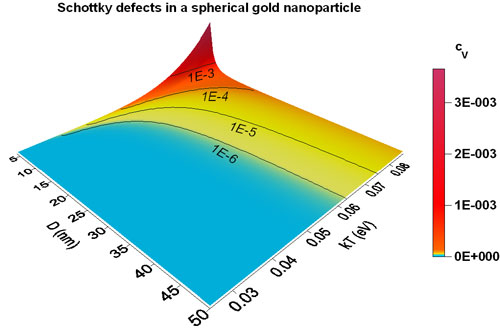Nanotech warning for councils
Bay of Plenty councils are being warned nanotechnology is going to have to be considered in any future waste management plan. The warning comes in submissions made on Wednesday on the Tauranga City and Western Bay of Plenty District Councils' joint draft waste management plan.
Jean Anderson, coordinator for physicians and scientists for global responsibility, says the plan as it stands has no reference to disposal of manufactured products using nanotechnology. "These products are already finding their way into retail markets despite there being a paucity of research available on the environmental and human health effects of these nano products," says Jean in submissions.
"A draft policy projecting six years forward should anticipate imminent and inevitable changes to waste quality." Nanotechnology refers to structures, materials and systems that operate at a scale of atoms and molecules, 100 nanometres or less. One nanometre is one billionth of a metre. A virus measures about 100nm.
In her submission Jean says the properties of ordinary materials alter at nano scales. Nano scale aluminium can spontaneously combust, gold, which is normally inert, can bind with human DNA. Nano particles can pass through skin, blood vessels and the blood-brain barrier. Worldwide there are estimated to be 300 food items using nanotechnology in wrapping, processing and ingredients, and it is being proposed for products for domestic agricultural industrial medical and other uses - despite some risks, says Jean.
"Scientists do not know if nano particles persist and accumulate in the environment and what may happen ecologically. "What needs to be looked at is how to handle manufacturing waste as well as ordinary waste coming from homes and shops, and to do this urgently."
Jean says the Ministry of Research Science and Technology is currently also reviewing regulations relevant to nano materials including looking at the Hazardous Substances and new Organisms Act, the Health and Safety in Employment Act, the Waste Minimisation Act and a range of other legislation.
Friday, January 21, 2011
Size effect and vacancies in nanomaterials
| Size effect and vacancies in nanomaterials | |
| (Nanowerk Spotlight) At the nanoscale, the properties of materials – mechanical, electrical, thermal, optical – often differ significantly from their bulk behavior. And while nanostructured and nanoengineered products are appearing in the marketplace, researchers are still trying to understand all aspects of materials properties of nanostructures and how they can be modified and controlled. | |
| Vacancies (also called Schottky defect) play a major role in the electrical and thermal transport as well as the mechanical behavior of materials. A vacancy is the simplest defect which can be created in a material – it corresponds to a lack of an atom in the lattice. | |
| New theoretical work by Grégory Guisbiers at the Université catholique de Louvain in Belgium calculates the size effect on the vacancy formation energy, the vacancy formation entropy and the vacancy concentration into nanomaterials through a top-down approach by using classical thermodynamics. | |
| Reporting his work in an upcoming paper in Journal of Physical Chemistry C ("Schottky defects in nanoparticles"), Guisbiers' main findings is that the vacancy concentration increases when size reduces and temperature increases. This result is important because it helps to understand how the mechanical, electrical and thermal properties are modified at the nanoscale. The model considers the size effect on the vacancy formation energy and the vacancy formation entropy. The previous model from Qi et al. ("Surface-area-difference model for thermodynamic properties of metallic nanocrystals") only considered the size effect on the vacancy formation energy. Guisbier's model goes one step further. | |
| "To understand the processes occurring in nanomaterials during heat treatment and mechanical deformation, the size effects on the vacancy formation energy and entropy have to be considered," Guisbiers explains to Nanowerk. "The new model explains why nanomaterials appear to be perfect – it is due to the limited number of atoms in a particle (nanoparticles generally have less than one million atoms and according to the theory there are less than 1 vacancy per one million atoms)." | |
 | |
| The vacancy concentration of a spherical gold nanoparticle is plotted versus its size and temperature. The vacancy concentration increases dramatically (∼10-3) for small sizes (∼5nm) and high temperatures (T ∼1000K). (Image: Grégory Guisbiers) | |
| This model can also explain how defects like vacancies influence the properties of a material. It allows the calculation of the vacancy concentration, the vacancy formation energy, and the vacancy formation entropy for a nanoparticle. | |
| "Predicting the vacancy concentration in nanostructures is important because it can explain the mechanical, electrical and thermal properties observed in these nanostructures" says Guisbiers. "Indeed, the presence of vacancies in the crystal lattice modifies the lattice structure around the vacancies and then results in a decrease of the lattice parameter and a lattice softening. Furthermore, the hardness and the yield strength of the material typically increase with decreasing size, a phenomenon known as the Hall-Petch effect. The size-dependent hardness enhancement at a temperature well below the melting temperature is due to the bond length contraction and the associated bond strength gain. Increasing vacancy concentration results in a decrease of the electrical and thermal conductivity due to the scattering of electrons on vacancies and the lattice softening." | |
| The next stages in Guisbiers' investigations are to focus on interstitial defects and dislocations. The goal is to see how these defects can influence the nanomaterials properties. | |
| By Michael Berger. Copyright 2011 Nanowerk |
Subscribe to:
Posts (Atom)